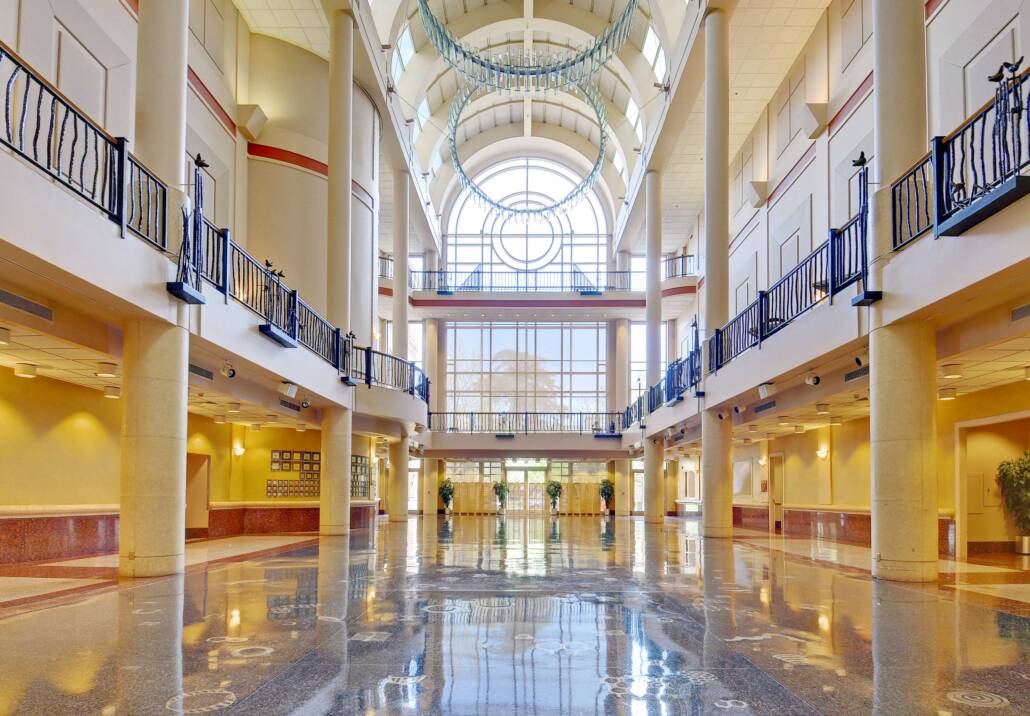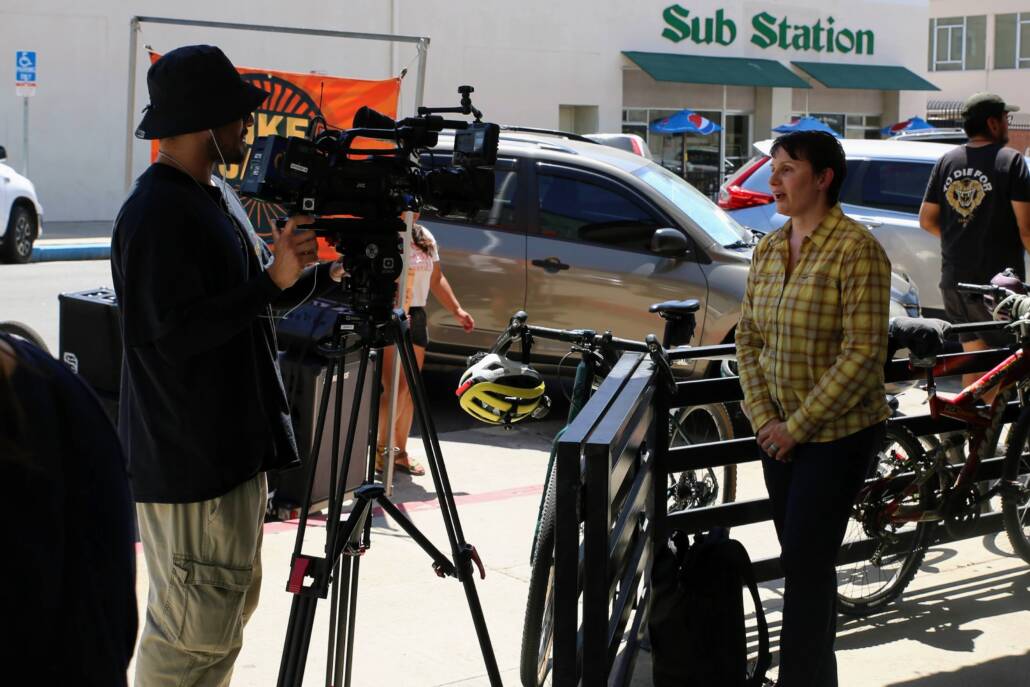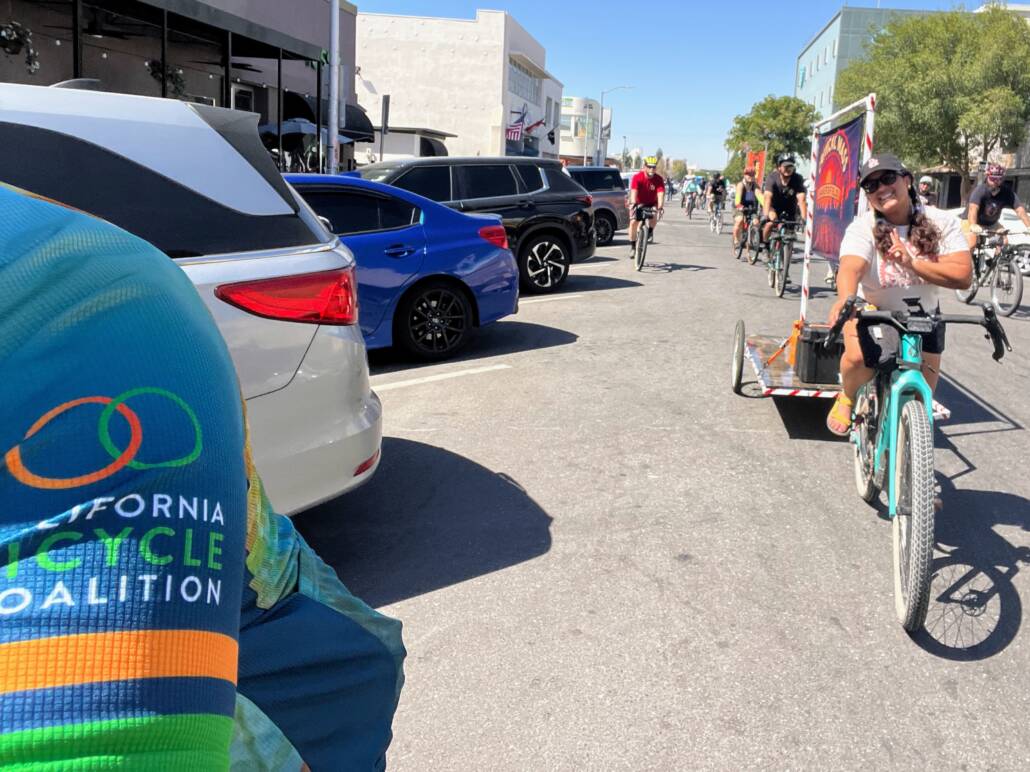For most of its existence, CalBike has worked to secure more funding for bike infrastructure and safety improvements. We were instrumental in getting dedicated funding for biking and walking projects through SB 1 gas tax revenue for the Active Transportation Program (ATP). In recent years, we’ve seen the small percentage of our transportation dollars allocated for active transportation clawed back while huge pots of money still flow to climate-killing highway projects.
As the death toll on California’s roads rises and the climate crisis becomes more dire, the solutions embraced by our elected leaders look a lot like the things that got us here. With our Invest/Divest campaign, CalBike urges elected officials to stop digging us into a deeper climate hole and shift funding priorities to programs that will help us get out of the hole.
Addressing the transportation crisis
In times of crisis, state and local governments can find the will and the money to take extraordinary steps to meet community needs. We saw that in a fast-moving emergency with the heroic efforts to fight the Los Angeles fires earlier this year. California’s housing shortage is a long-term emergency, but lawmakers have taken aggressive steps to remove obstacles and reduce costs, thus incentivizing home building.
In Paris, Mayor Anne Hidalgo is addressing another long-term crisis: climate change. With ambitious goals to add bikeways and make biking an appealing option for getting around the city, Paris has dramatically reduced air pollution — and thus carbon emissions.
The transformation of Paris isn’t cheap. The city’s plan comes with a budget of 250 million euros (around $300 million USD), and it’s taken a great deal of political will and a commitment across government agencies to make the changes happen.
But that’s what we do in a crisis, isn’t it?
Engineering as an obstacle
Like the bills aimed at growing our housing stock, California lawmakers have taken some steps toward making it easier to build biking and walking infrastructure. The Complete Streets Bill, which CalBike sponsored and helped pass last year, strengthens requirements for Caltrans to include bike, pedestrian, and transit priority elements in its road repair projects, tapping into the large pot of funding the agency has for maintaining and improving state routes. And SB 71, authored by Senator Scott Wiener, would give bikeway planning a permanent exemption from CEQA, California’s environmental review law, and extend the temporary exemption for bikeway infrastructure projects to 2040. These are important steps, but they’re not enough.
One of the lessons bike advocates have learned through hard experience is that something isn’t always better than nothing. A bikeway that drops off at an intersection or stops short when competing uses make allocating street space complicated won’t encourage people to get around by bike. To give Californians true options in how they get around, we need the commitment to push through the hard spaces, overcome NIMBYism, and build connected, protected bike routes.
European cities have one advantage over the U.S.: there is no room for hard-and-fast rules. In adding modern transportation to places built before bicycles or cars were invented, planners are forced to be creative. When the sidewalk dwindles down to nothing in the face of a building that’s stood for centuries, people walk in the street. There is no minimum lane width, as cars, buses, and delivery vans (and delivery bikes, in Amsterdam) jostle for space with pedestrians, bike riders, trams, and vendors pushing carts.
We need design guidance for safe bikeways and traffic lanes, but we also need flexibility to find new solutions when a street narrows rather than dropping the bike lane because “we couldn’t build it safely.”
What this moment asks of us
Climate change is an existential crisis that calls on us to step outside of our comfort zone and take bold actions. Here are three things California needs to do to shift our transportation priorities from fossil-fueled disaster to human-centered safety.
- Slow down cars. There’s no solution that keeps people on bikes and walking from interacting with vehicular traffic. Reducing speeds through design and, ultimately, changing cultural norms is the only way for all modes to peacefully coexist.
- Spend A LOT of money on active transportation infrastructure. By a lot, we mean A LOT. Spend like there’s a climate disaster paired with rising pedestrian and bicyclist deaths, and we actually want to solve this rather than slowly roasting in a fiery pit of our own making. For context, California’s annual transportation budget is around $20 billion; combined with federal funds, we spend over $30 billion. The ATP gets approximately $300 million a year — that’s the same amount Paris spent on active transportation, but spread across a state with 40 million people. We can afford a moonshot to make our state more bikeable if we make it a priority.
- Make traffic engineering flexible and evidence-based. Traffic engineers are extremely risk-averse and often unwilling to build infrastructure that isn’t sanctioned in one of the official documents they treat like bibles. But those manuals are car-centric, often recommending infrastructure that isn’t safe for vulnerable road users. Shifting the mindset of hundreds of engineers isn’t easy. It might require new laws, lifting more regulations, or changing liability laws.
There aren’t enough electric cars to save us from climate catastrophe. We’re going to have to make big changes to our transportation systems. Cities in other countries that have done this have seen better health outcomes, reduced deaths, and a higher quality of life. CalBike is committed to bringing those benefits to our state.







